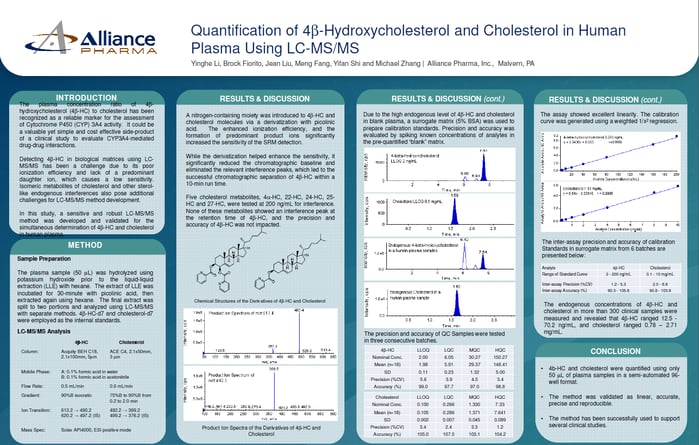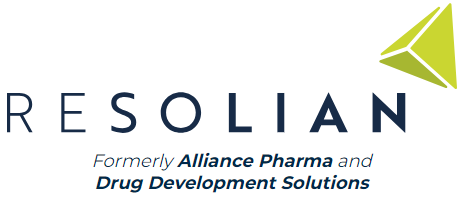The plasma concentration ratio of 4b-hydroxycholesterol (4b-HC) to cholesterol has been recognized as a reliable marker for the assessment of Cytochrome P450 (CYP) 3A4 activity. It could be a valuable yet simple and cost effective side-product of a clinical study to evaluate CYP3A4-mediated drug-drug interactions.
Detecting 4b-HC in biological matrices using LC-MS/MS has been a challenge due to its poor ionization efficiency and lack of a predominant daughter ion, which causes a low sensitivity. Isomeric metabolites of cholesterol and other sterollike endogenous interferences also pose additional challenges for LC-MS/MS method development. In this study, a sensitive and robust LC-MS/MS method was developed and validated for the simultaneous determination of 4b-HC and cholesterol in human plasma.

Sample Preparation
The plasma sample (50 μL) was hydrolyzed using potassium hydroxide prior to the liquid-liquid extraction (LLE) with hexane. The extract of LLE was incubated for 30-minute with picolinic acid, then extracted again using hexane. The final extract was split to two portions and analyzed using LC-MS/MS with separate methods. 4b-HC-d7 and cholesterol-d7 were employed as the internal standards.
LC-MS/MS Analysis
A nitrogen-containing moiety was introduced to 4b-HC and cholesterol molecules via a derivatization with picolinic acid. The enhanced ionization efficiency, and the formation of predominant product ions significantly increased the sensitivity of the SRM detection.
While the derivatization helped enhance the sensitivity, it significantly reduced the chromatographic baseline and eliminated the relevant interference peaks, which led to the successful chromatographic separation of 4b-HC within a 10-min run time. Five cholesterol metabolites, 4a-HC, 22-HC, 24-HC, 25-HC and 27-HC, were tested at 200 ng/mL for interference. None of these metabolites showed an interference peak at the retention time of 4b-HC, and the precision and accuracy of 4b-HC was not impacted.
Due to the high endogenous level of 4b-HC and cholesterol in blank plasma, a surrogate matrix (5% BSA) was used to prepare calibration standards. Precision and accuracy was evaluated by spiking known concentrations of analytes in the pre-quantified “blank” matrix.
The precision and accuracy of QC Samples were tested in three consecutive batches. The assay showed excellent linearity. The calibration curve was generated using a weighted 1/x2 regression. The endogenous concentrations of 4b-HC and cholesterol in more than 300 clinical samples were measured and revealed that 4b-HC ranged 12.5 -70.2 ng/mL, and cholesterol ranged 0.78 – 2.71 mg/mL.
Conclusions
- 4b-HC and cholesterol were quantified using only 50 μL of plasma samples in a semi-automated 96-
well format. - The method was validated as linear, accurate,
precise and reproducible. - The method has been successfully used to support several clinical studies
Scientists
Yinghe Li, Brock Fiorito, Jean Liu, Meng Fang, Yifan Shi and Michael Zhang







